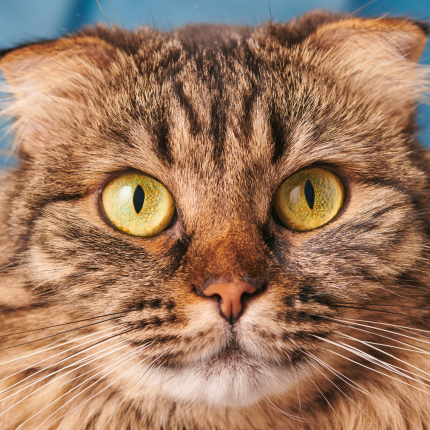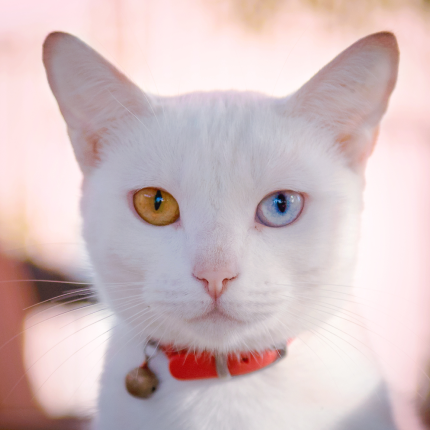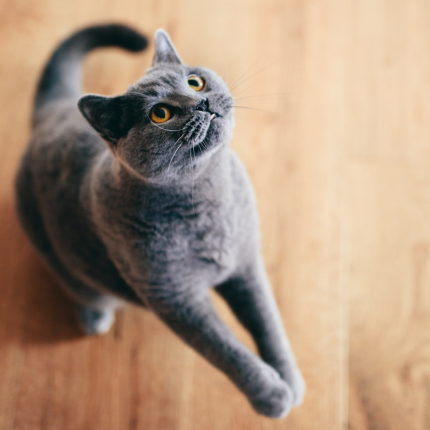Recent Study Finds Cats Have At Least 276 Distinct Facial Expressions

The stereotype of cats as distant and mysterious animals has been challenged by a recent discovery: cats possess at least 276 distinct facial expressions, shedding light on their capacity for emotional expression and communication.
This unexpected finding goes against the common belief that cats are unresponsive and uninterested in human interactions. It suggests that these various expressions have developed over thousands of years of domestication, resulting from the intricate communication between humans and cats.
Our extensive history with cats has fueled a growing interest in deciphering their emotions. Brittany Florkiewicz, a comparative and evolutionary psychologist from Lyon College in Arkansas, led a groundbreaking study to explore this further. The study builds on previous research that primarily examined facial signals in cats during interactions with humans or when experiencing pain. Florkiewicz’s study, however, delves deeper by investigating how cats communicate with each other and with humans.
What better place to investigate than a cat cafe? Florkiewicz and her colleague Lauren Scott, co-principal investigator in her lab, spent 150 hours observing 53 domestic shorthair cats at the CatCafe Lounge in Los Angeles, California. This nonprofit shelter allows visitors to interact with up to 30 cats available for potential adoption.
Their observations revealed an array of expressions, combining eye, ear, and lip movements. Surprisingly, the majority of these expressions conveyed friendliness rather than aggression. Some familiar expressions, like forward-pointing ears and whiskers with closed eyes, indicated friendliness. However, some expressions, such as what the researchers termed “play face,” featuring forward ears and whiskers with the corners of the mouth pulled back, lacked obvious meanings.
Notably, while signifying anticipation of a treat, a lip lick could take on an unfriendly tone when combined with narrowed pupils and flattened ears. Whisker orientation proved surprisingly revealing, with content or joyful cats typically pointing their whiskers forward.
Back in the lab, the team employed the Facial Action Coding System (CatFACS) for a more detailed analysis. CatFACS allowed trained observers to identify even the subtlest muscle movements. Each movement called an “action unit,” was meticulously documented and assigned a number using the video software ELAN. This approach facilitated creating and editing a video timeline capable of discerning expressions down to the millisecond.
This meticulous analysis uncovered 26 distinct muscle movements that, in various combinations, yielded an astonishing 276 facial expressions. These expressions were categorized as 46% friendly, 37% unfriendly, and 17% falling into both categories.
This detailed examination of facial expressions has unveiled nuanced meanings akin to distinguishing between genuine and forced smiles in humans. Although both involve smiling, subtle differences, such as eye movements, can indicate whether the smile is authentic.
While many feline expressions have been decoded, some remain enigmatic. The research team plans to conduct follow-up studies to decipher these mysterious signals fully.
The process of domestication has enriched the spectrum of social interactions among cats of the same species. Domesticated felines are known to engage in a diverse range of social behaviors, encompassing both non-affiliative interactions and a plethora of affiliative behaviors. These affiliative behaviors are of utmost importance in establishing and nurturing social bonds among them, highlighting the fascinating impact of domestication on feline social dynamics.

Featured Articles

The Odd-Eyed Cat (AKA Heterochromia)
Cats are already beautiful and fascinating creatures, but people are bound to take notice when they have something as captivating as two different colored eyes. Odd-eyed cats always have one blue eye paired with either a green, yellow, or brown eye. This form of heterochromia occurs in other animals, including…

Polydactyl Cats: Just More Beans to Love
Polydactyl cats have become extremely popular in recent times. As a result, more and more people are interested in learning more about this six-toed cat and want to get one of their own. If you are a cat lover intrigued by polydactyl cats, you have come to the right place….

Why Do Cats Roll Over Into Their Backs But Not Let You Touch Their Bellies?
It’s common knowledge dogs love to have their tummies rubbed when they freely lay down before you and roll onto their backs. But, if you’re also familiar with cats, you know that when they roll onto their backs with their bellies exposed, rubbing the belly will most likely result in…
